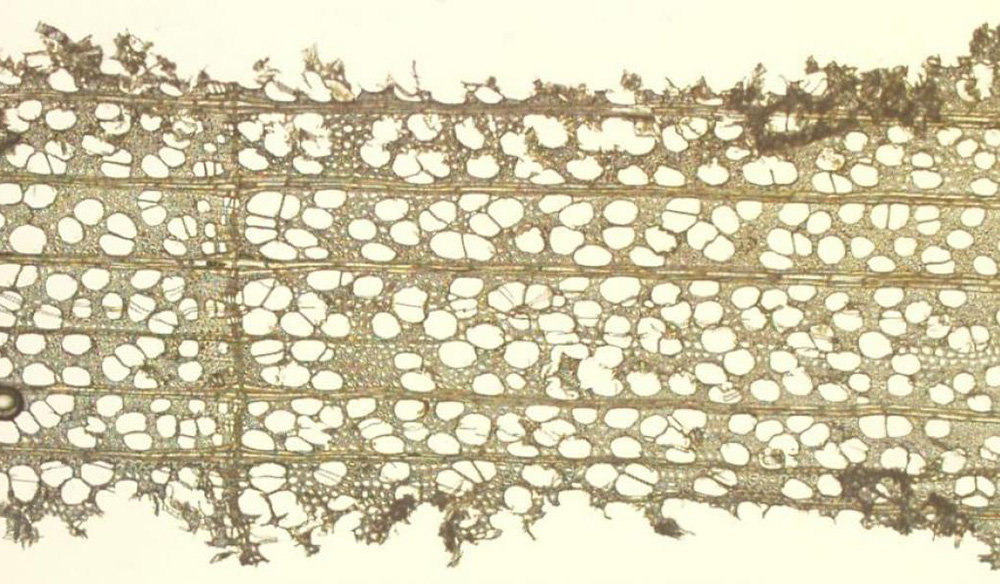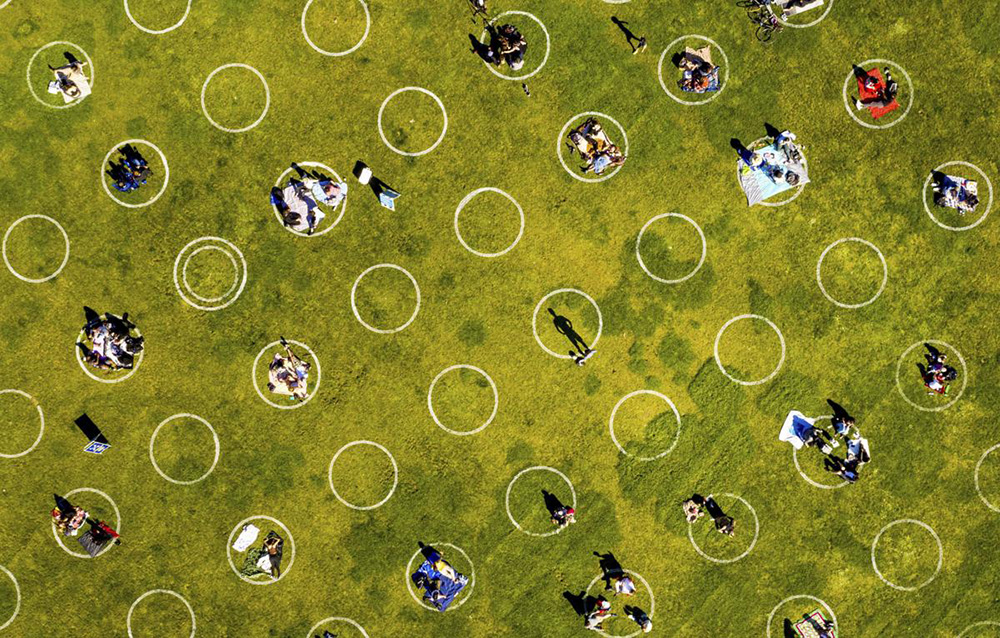The Form of Fear: Isolation and the Horizon — Brad Cloepfil
Jun 23, 2020
" Lost my shape, trying to act casual…" - Talking Heads, Remain in Light
For the past few months we have been awaiting release from something we are powerless to control. We scan the horizon, anticipating the arrival of herd immunity, a medical breakthrough, political leadership: anything that will signal an end to this period of disorientation and fear. As time passes we grow desperate for delineation—a line to cross—some way to put this all behind us. In the mean time we have been completely restructuring our lives.
Isolation
Where once we were collective, we now are singular. At best we live in family pods, home bound orca—with our habitat severely restricted. Yet, in our homes we move unfettered through our days. The structure that gave form to our lives, the boundaries that we resisted and relied on, have dissolved. Work and home have collapsed into one, serving neither well. We've lost the categories and distinctions that define our relationships. There are only days and nights: the tapestry of interaction - once woven together by daily rituals, incidental conversation, observation, atmosphere and nuance—is threadbare. Years of coming together in the globalization of our lives, now disperses into seclusion—extending the cultural and political isolation that accompanies it.
Time has been recast: we are living a freelance life, attempting to master this new luxury of self-definition. When not bound by the endless cells of one-hour zoom calls, we go for bike rides, read, and bake, in attempts to give form to our days. All the activities we once longed to be able to do during the work week are right at hand. Yet somehow the freedom of self-direction and the insights of reflection have proven feeble and frail. Perhaps we are missing more than the lifestyle we have recently lost.
The roller coaster ride of the pandemic continues. From the cocoon of our sequestering we are emerging into a new social structure: segmental time. We will now have timed access into markets and make reservations to shop in retail stores. Everything that once was casual and incidental is now prescribed and determined. I recently read of a major museum that will reopen to the public by adopting timed entry and enforced social distancing, while requiring continual movement through the galleries. For the foreseeable future, what was once simultaneously collective and intimate is re-formed into a conveyor belt of culture. Days once rich with an unpredictable mix of home, work, meals, social engagements—ornamented by the incidental—must be utterly controlled.
The definition of our public realm is evolving, in the name of safety and with the political impetus to resume "normal (economic) life". We are entering into a new bubble culture, a life of crystallized cells in time and space, with our separation now institutionalized.
The Horizon
"Ceremony focuses attention so that attention becomes intention. If you stand together and profess a thing before your community, it holds you accountable." —Robin Wall Kimmerer
From our hiding, we now venture out into the public realm, cloaked in our fear of one another. We are both counseled and required to keep our distance. If our immediate future is to be defined by touch-less controls, timed segments of occupation and six-foot cells of space, how do we come together? Armed with masks, gloves, suits and shields, how do we know when we have won the battle? Or do we simply accept this ultimate suburbanization of our lives— enabled by technology, formalized by pandemic.
We await a sign. At the starting gate, we listen for the bell —a treatment or vaccine that will signal a return to our former lives. With no true refuge, we long for the safety of the past, to what we knew. Recently I watched the restart of professional soccer in Germany with the teams performing to an empty stadium, the players' voices echoing from the tiers of vacant seats. Sport played and spoken into the void— the beautiful game was lost in silence.
To be alive, in the world, is to be seen and heard. Communication and exchange form the foundation of our lives, with arenas, churches, museums, theaters and public squares amplifying and broadcasting those exchanges. If the pandemic was the catalyst of our isolation, what will restore our lost sense of community? In the past two weeks, we've found the answer. The tolling of injustice released us from our private refuge and people all over the world have stepped back into the streets. Coming together in protest, calling for justice for the victims of senseless and corrupt police violence.
In our outrage we have embraced one of the greatest rituals of humankind: public dissent. Filling the streets and squares of our cities, we are finding our collective form again. With the jet trails diminished, the smog subsiding, the world silenced—we are able to see and hear as never before. In the recent videos and accounts of Christian Cooper, Amaud Arbery, Breonna Taylor and George Floyd, we have witnessed the horrors of racial injustice. Our current sentence of distance and time has delivered acuity.
Now there is no going back inside, no going back to life the way it was before. The waves of outrage have washed away the road to return. We will not chase ghosts in empty rooms. The only direction is forward. With the specter of death still at our doors, the oppressive wall of separation—building for much longer than the current pandemic—is being dismantled. When so many have been denied the fundamental rights of a life free from prejudice, violence and persecution, we are finally stepping out into the light of our shared humanity. The line has been crossed. The future we have been waiting for has begun.



" Lost my shape, trying to act casual…" - Talking Heads, Remain in Light
For the past few months we have been awaiting release from something we are powerless to control. We scan the horizon, anticipating the arrival of herd immunity, a medical breakthrough, political leadership: anything that will signal an end to this period of disorientation and fear. As time passes we grow desperate for delineation—a line to cross—some way to put this all behind us. In the mean time we have been completely restructuring our lives.
Isolation
Where once we were collective, we now are singular. At best we live in family pods, home bound orca—with our habitat severely restricted. Yet, in our homes we move unfettered through our days. The structure that gave form to our lives, the boundaries that we resisted and relied on, have dissolved. Work and home have collapsed into one, serving neither well. We've lost the categories and distinctions that define our relationships. There are only days and nights: the tapestry of interaction - once woven together by daily rituals, incidental conversation, observation, atmosphere and nuance—is threadbare. Years of coming together in the globalization of our lives, now disperses into seclusion—extending the cultural and political isolation that accompanies it.
Time has been recast: we are living a freelance life, attempting to master this new luxury of self-definition. When not bound by the endless cells of one-hour zoom calls, we go for bike rides, read, and bake, in attempts to give form to our days. All the activities we once longed to be able to do during the work week are right at hand. Yet somehow the freedom of self-direction and the insights of reflection have proven feeble and frail. Perhaps we are missing more than the lifestyle we have recently lost.
The roller coaster ride of the pandemic continues. From the cocoon of our sequestering we are emerging into a new social structure: segmental time. We will now have timed access into markets and make reservations to shop in retail stores. Everything that once was casual and incidental is now prescribed and determined. I recently read of a major museum that will reopen to the public by adopting timed entry and enforced social distancing, while requiring continual movement through the galleries. For the foreseeable future, what was once simultaneously collective and intimate is re-formed into a conveyor belt of culture. Days once rich with an unpredictable mix of home, work, meals, social engagements—ornamented by the incidental—must be utterly controlled.
The definition of our public realm is evolving, in the name of safety and with the political impetus to resume "normal (economic) life". We are entering into a new bubble culture, a life of crystallized cells in time and space, with our separation now institutionalized.
The Horizon
"Ceremony focuses attention so that attention becomes intention. If you stand together and profess a thing before your community, it holds you accountable." —Robin Wall Kimmerer
From our hiding, we now venture out into the public realm, cloaked in our fear of one another. We are both counseled and required to keep our distance. If our immediate future is to be defined by touch-less controls, timed segments of occupation and six-foot cells of space, how do we come together? Armed with masks, gloves, suits and shields, how do we know when we have won the battle? Or do we simply accept this ultimate suburbanization of our lives— enabled by technology, formalized by pandemic.
We await a sign. At the starting gate, we listen for the bell —a treatment or vaccine that will signal a return to our former lives. With no true refuge, we long for the safety of the past, to what we knew. Recently I watched the restart of professional soccer in Germany with the teams performing to an empty stadium, the players' voices echoing from the tiers of vacant seats. Sport played and spoken into the void— the beautiful game was lost in silence.
To be alive, in the world, is to be seen and heard. Communication and exchange form the foundation of our lives, with arenas, churches, museums, theaters and public squares amplifying and broadcasting those exchanges. If the pandemic was the catalyst of our isolation, what will restore our lost sense of community? In the past two weeks, we've found the answer. The tolling of injustice released us from our private refuge and people all over the world have stepped back into the streets. Coming together in protest, calling for justice for the victims of senseless and corrupt police violence.
In our outrage we have embraced one of the greatest rituals of humankind: public dissent. Filling the streets and squares of our cities, we are finding our collective form again. With the jet trails diminished, the smog subsiding, the world silenced—we are able to see and hear as never before. In the recent videos and accounts of Christian Cooper, Amaud Arbery, Breonna Taylor and George Floyd, we have witnessed the horrors of racial injustice. Our current sentence of distance and time has delivered acuity.
Now there is no going back inside, no going back to life the way it was before. The waves of outrage have washed away the road to return. We will not chase ghosts in empty rooms. The only direction is forward. With the specter of death still at our doors, the oppressive wall of separation—building for much longer than the current pandemic—is being dismantled. When so many have been denied the fundamental rights of a life free from prejudice, violence and persecution, we are finally stepping out into the light of our shared humanity. The line has been crossed. The future we have been waiting for has begun.